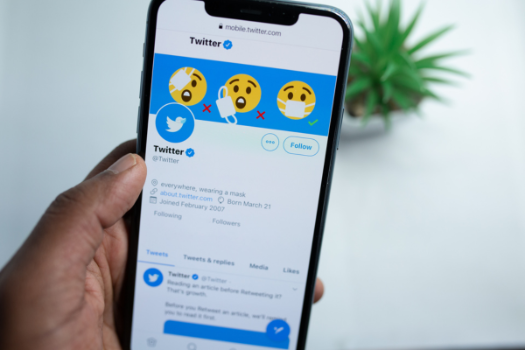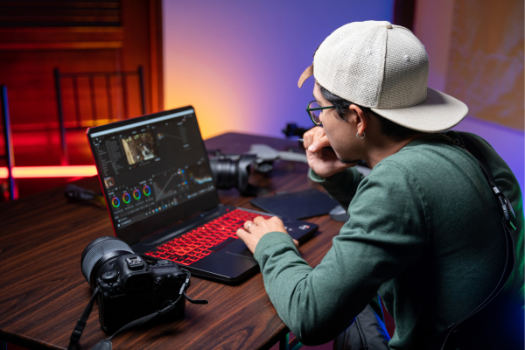.png)
Platform-Specific Content Optimization: What Works Where?
Not all social media platforms work the same. What grabs attention on Instagram may fall flat on LinkedIn. To get results, your content needs to match the platform.
This isn’t about copying and pasting. It’s about knowing what each audience expects—and what the platform favors.
In this blog, we’ll break down what works best on major platforms: Facebook, Instagram, Twitter, LinkedIn, Pinterest, TikTok, and YouTube. We’ll keep it simple and show you how to shape your content to fit each space.
Let’s dive in and make your posts work smarter.

Facebook: Connection and Conversation
Facebook is great for building community and sharing stories.
What works:
- Short, clear posts (under 300 characters)
- Eye-catching images or videos
- Questions or polls to spark comments
- Facebook Stories for quick updates
Use a friendly, casual tone. Share behind-the-scenes moments or success stories. Add a call-to-action like “Tell us your favorite…” or “Tag a friend.”

Use native video whenever possible—it gets more reach. Also, reply to comments. Facebook favors posts that create back-and-forth.
Stay consistent, but don’t overwhelm. A few strong posts a week are better than daily noise.
Instagram: Visual Storytelling
Instagram is all about the scroll-stopping visual.
What works:
- Bright, high-quality photos
- Carousel posts for tips or how-tos
- Reels for short, fun videos
- Stories for daily updates
Write short captions, but add context or personality. Emojis help draw the eye. Use 5–10 relevant hashtags (not 30). Keep them clean and brand-aligned.

Stick to a visual theme. Use the same color tones or filters to keep your feed looking sharp.
Reels and Stories are your best bet for growth. Use trending audio and short, punchy clips. And always include a CTA—like “Save this for later” or “Share with a friend.”
Twitter: Real-Time Relevance
Twitter moves fast. Your posts should too.
What works:
- Short thoughts (under 280 characters)
- Timely takes or live event reactions
- Links to blog posts or resources
- One or two relevant hashtags
Keep it clear. No fluff. Lead with the most interesting part.

Use polls, questions, or threads to invite responses. You can also quote-tweet others and add your voice.
Add visuals like GIFs, memes, or quick videos. Tweets with media often perform better.
Post often—but don’t just push links. Mix it up with thoughts, tips, or shout-outs.
Twitter is where people talk. So talk with them, not at them.
LinkedIn: Authority and Insights
LinkedIn is for professionals. They want useful content, not fluff.
What works:
- Short personal stories with lessons
- Industry tips or thought leadership posts
- Clean graphics or charts
- Polls or open-ended questions
Use a professional tone, but keep it human. Share wins, fails, or what you’ve learned.
Articles and longer posts work well here. But so do short, bold insights. Try a hook in the first line to stop the scroll.
LinkedIn’s algorithm likes engagement. Ask for input, tag others, and reply to comments.
Share helpful, valuable ideas—and you’ll build trust and reach.
Pinterest: Searchable Inspiration
Pinterest isn’t just social—it’s a search engine.
What works:
- Vertical graphics with helpful text (2:3 ratio)
- DIY, tips, recipes, or visual guides
- Keywords in your pin titles and descriptions
- Organized boards around themes
Keep your visuals clean and bold. Use text overlays to explain what the pin is about.

Think evergreen. Content here lives longer, so focus on value that lasts.
Make pins clickable. Link to your blog, shop, or lead magnet.
Post consistently, and refresh top-performing pins. It helps you stay visible.
Pinterest is where people plan. Help them do it better.
TikTok: Fast, Fun, and Trendy
TikTok is about short videos with personality.
What works:
- Quick, engaging intros (first 3 seconds matter)
- Trending sounds or challenges
- Tips, behind-the-scenes, or storytelling
- Hashtags and text overlays
Don’t worry about perfection. Be real. Be fun. Show your face.
Hook your viewer early. Start with a bold line, a question, or something surprising.
Use text on screen to add clarity. And end with a CTA—“Follow for more” or “Tag someone who needs this.”
Watch what’s trending, but make it yours. Put your own spin on it.
Post often, test ideas, and don’t overthink. TikTok rewards creativity.
YouTube: Value and Consistency
YouTube is for longer-form content that teaches or entertains.
What works:
- How-to videos and tutorials
- Lists, walkthroughs, or interviews
- Custom thumbnails with bold text
- Clear titles and searchable keywords
Start strong. Use a teaser or question in the first 15 seconds.

Keep videos between 6–12 minutes when possible. Add chapters or timestamps for easy navigation.
Include a call to action: “Subscribe,” “Comment below,” or “Visit our site.”
Use playlists to keep people watching. And upload on a regular schedule.
YouTube takes time, but it builds deep trust and long-term traffic.
Conclusion
No two platforms are the same. What works on one won’t always work on another.
To grow your brand, tailor your content. Match the format, tone, and timing to each space.
Don’t try to be everywhere with the same post. Instead, repurpose smartly. Turn one idea into a tweet, a reel, a pin, and a post.
Test what works. Track your results. Then do more of what clicks.
When you optimize for the platform, your content goes further—and works harder for your business.